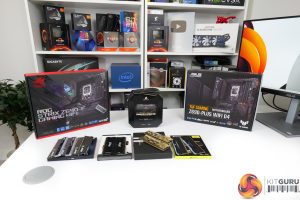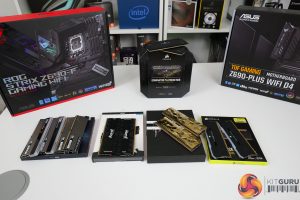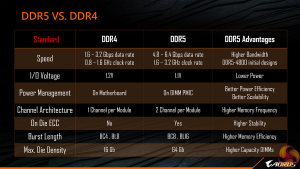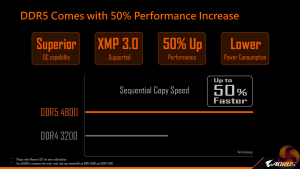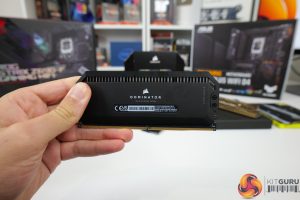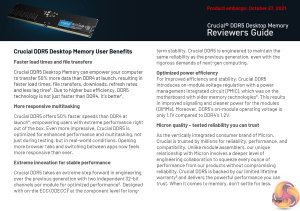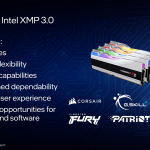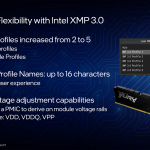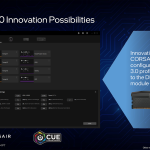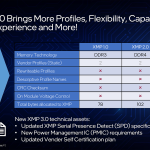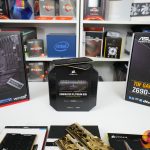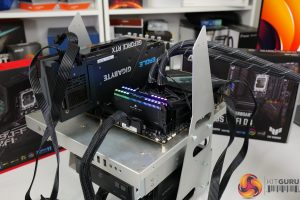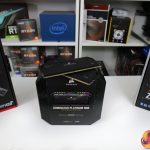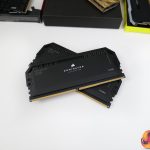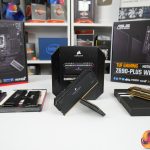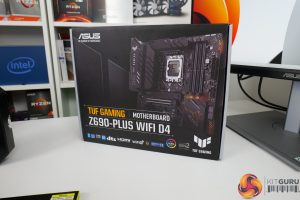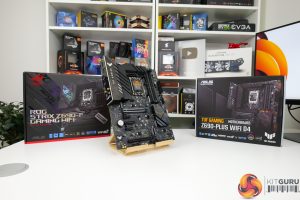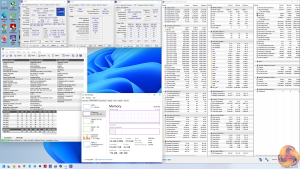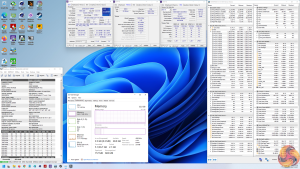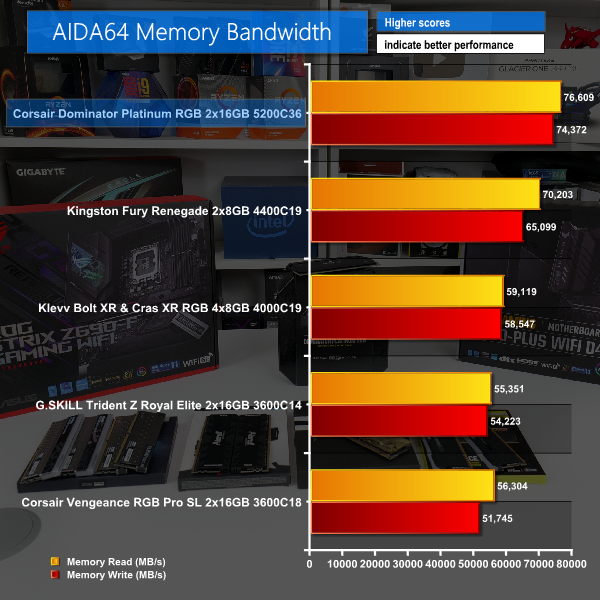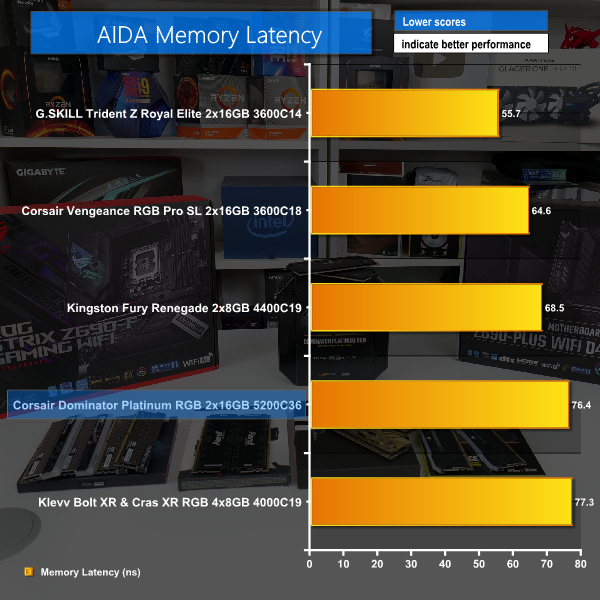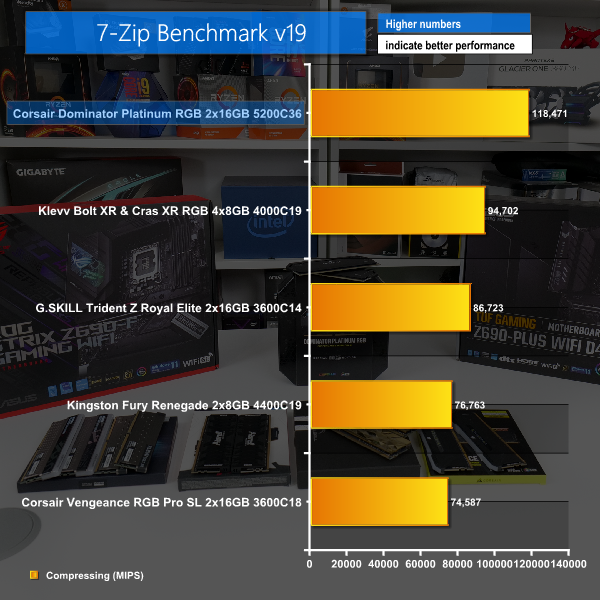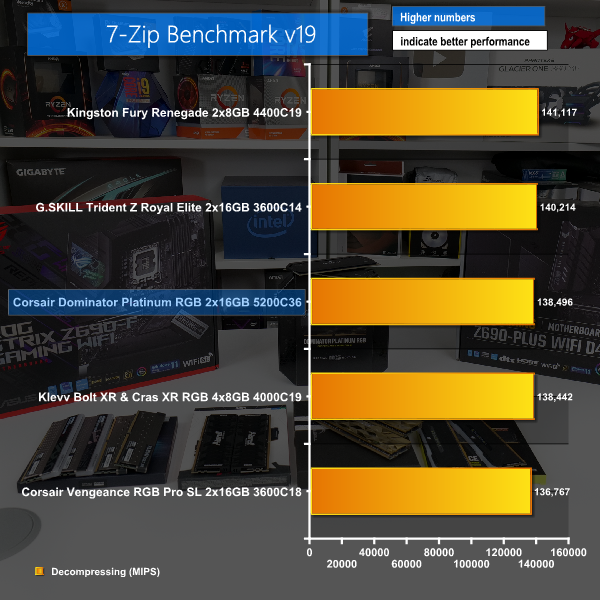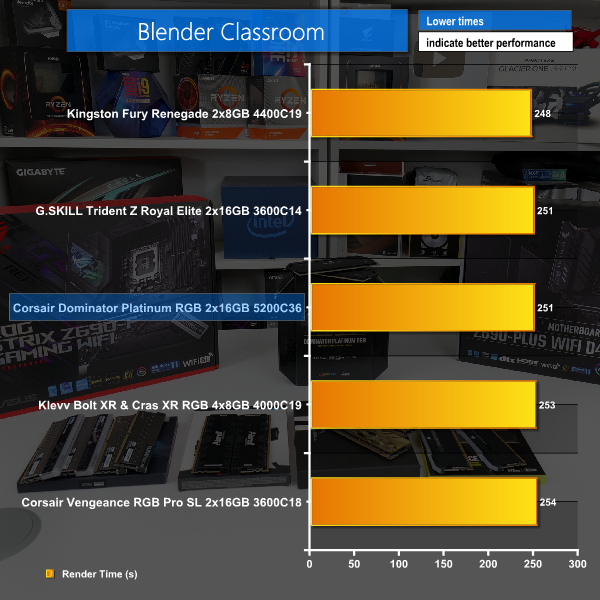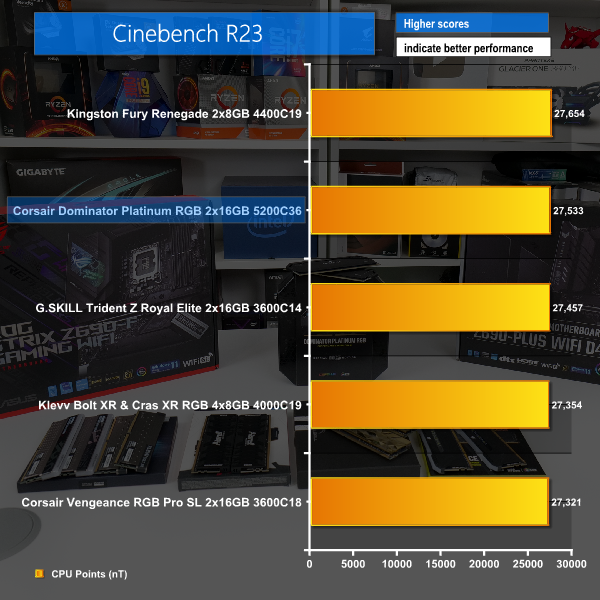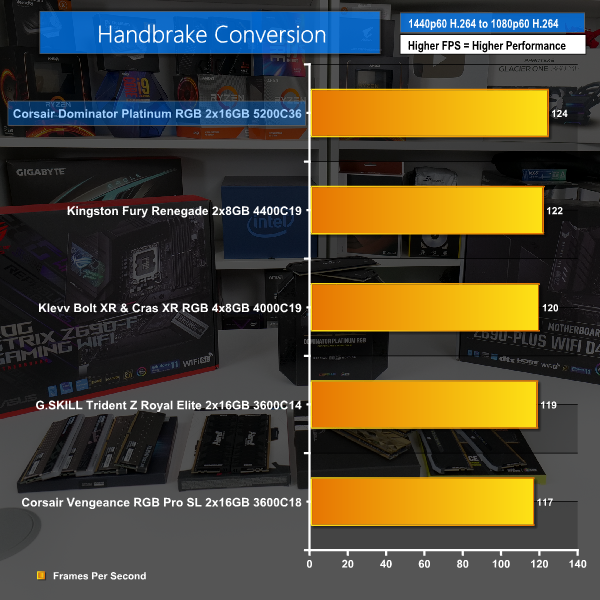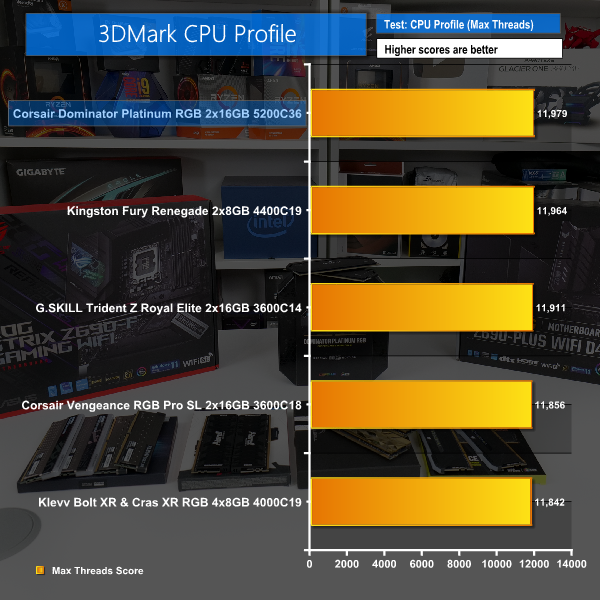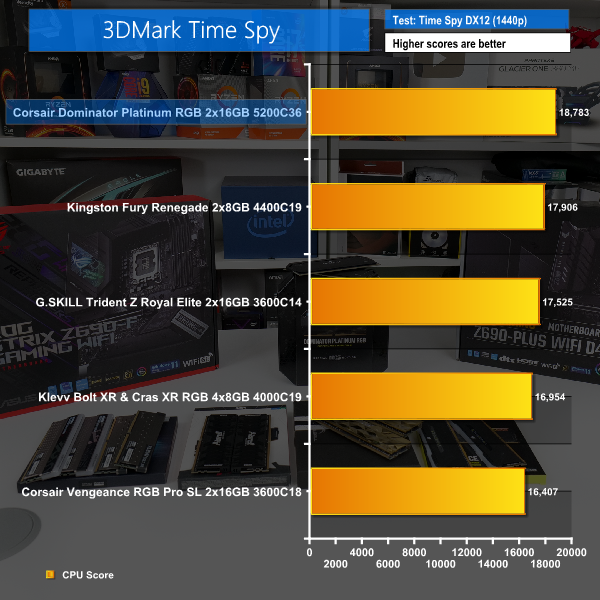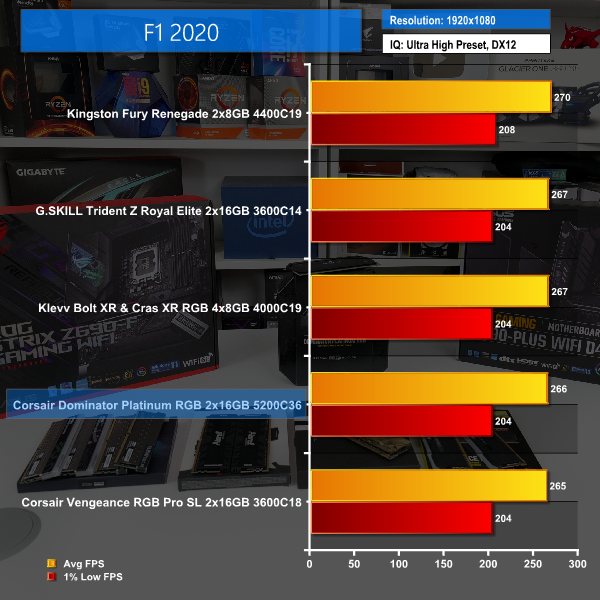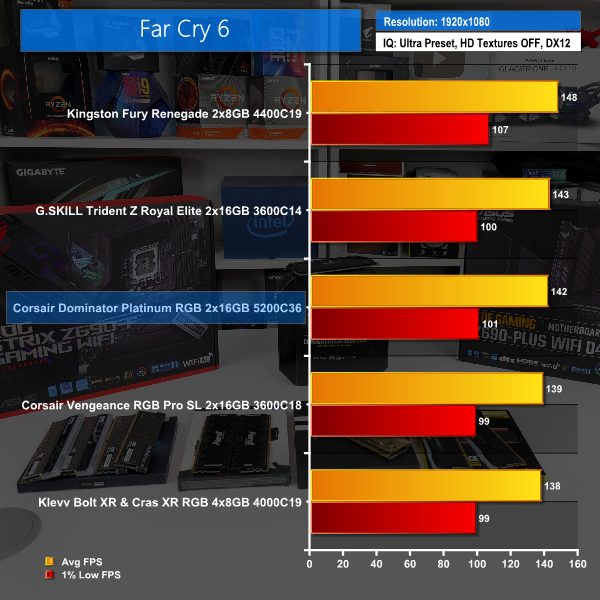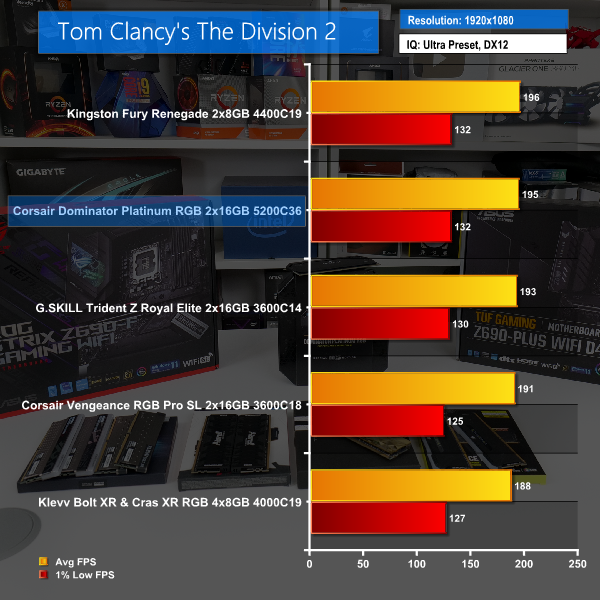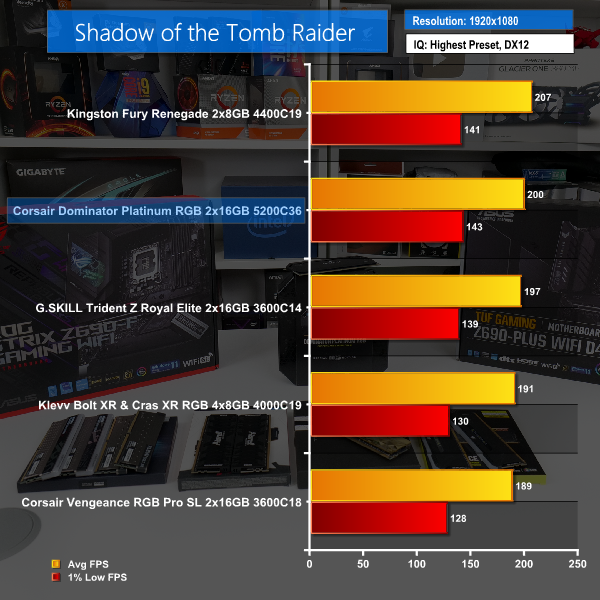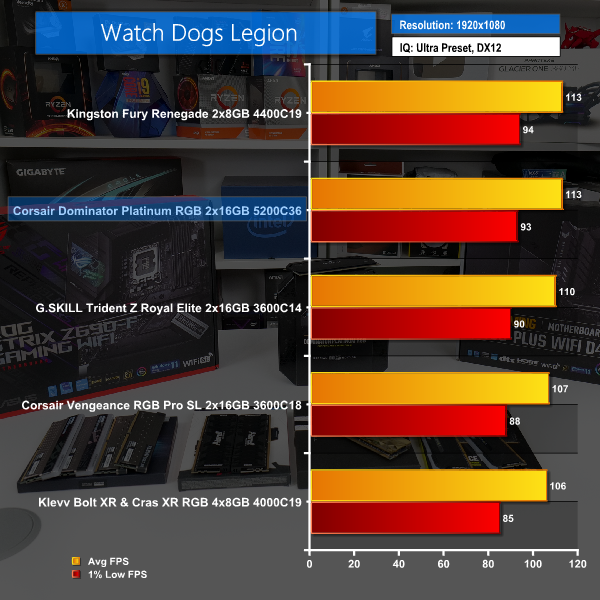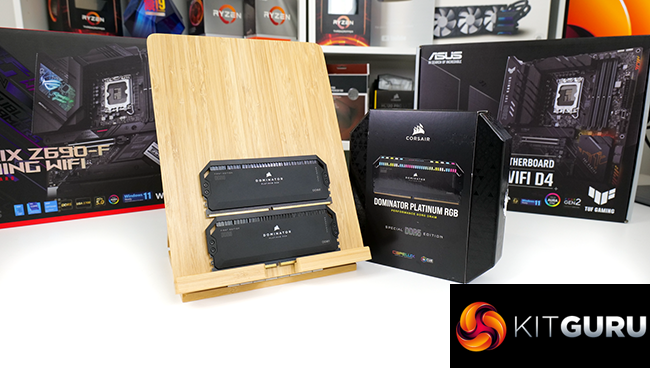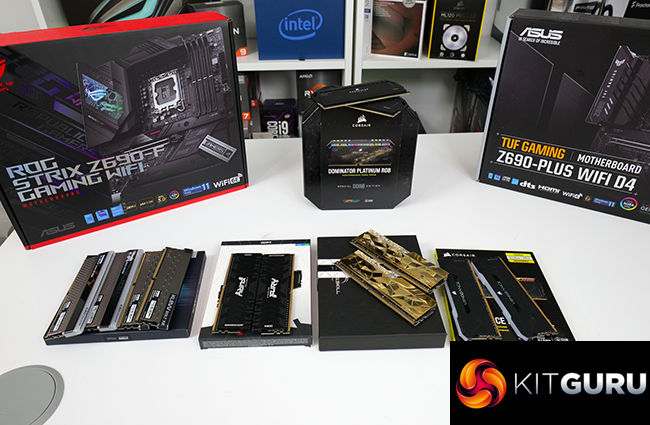Intel’s new 12th Gen Alder Lake processors and Z690 platform usher in a raft of new technologies. One of those key updates is a new memory technology to the desktop audience for the first time since 2014; enter DDR5!
Timestamps:
00:00 Start
01:06 DDR5 details
02:52 Frequencies and timings
04:10 Power management / voltages
04:46 Intel XMP 3.0 / Notch position
05:31 Quite a few changes
05:51 Test setup
06:55 Corsair Dominator Platinum RGB DDR5
08:27 Test boards
09:15 Comparison test kits
10:51 Technical details
11:45 Test Results
14:06 Gaming Test Results
15:24 Luke discusses the results
16:50 It's a decent launch
17:14 Closing thoughts
With promised boosts in frequency versus DDR4, higher density modules enabling greater capacities, and reduced power consumption – DDR5 looks like a stellar improvement. But with 12th Gen Alder Lake chips supporting both DDR4 and DDR5 – motherboard dependent – we have an excellent opportunity to compare like for like on consistent platforms.
Just how good is a brand-new premium set of DDR5 like this Corsair Dominator Platinum RGB kit? How does it fair against a variety of DDR4 offerings? And is it worth the sizeable price jump to around £280-300+ for 32GB DDR5 kits versus often £160-230ish for a solid spec 32GB kit of DDR4?
DDR5 has several notable improvements versus DDR4 – namely frequency, as we would expect. Let’s focus on some of the new DDR5 changes that we enthusiasts care about.
Nominal early DDR4 back in 2014 was typically in the order of 2400MHz, 2666MHz, or perhaps as high as 3200MHz if you were really fancy. Of course, today’s DDR4 kits are often well over 4GHz via overclocking.
DDR5 boosts nominal frequencies to 4800MHz as a starting point. And many premium kits will ship at 5200MHz – or higher – from Day 1, including this Corsair Dominator Platinum RGB that we have at hand.
That’s a big boost in frequency for DDR5 but it comes with significant loosening of the timings. Our 5200MHz Corsair kit runs at 36-38-38 – which is loose.
Typical decent DDR4 may be 16-18-18 or 18-19-19 at 3600MHz. And something like 4000MHz C19 is not uncommon. We even recently took a look at an uber high-end 5333MHz DDR4 kit from Kingston at C20.
You get a change to voltage control via a Power Management Integrated Circuit – or PMIC. This essentially allows the DDR5 module to handle power management and reduces the burden on motherboard control.
Nominal DDR5 voltage is 1.1V versus the common 1.2V for DDR4. And whereas DDR4 is typically 1.35V XMP but often as high as 1.45V. DDR5 is likely to use 1.25V as its go-to XMP voltage.
Speaking of XMP, DDR5 ushers in XMP 3.0. This enables greater tuning by increasing the number of slots to 5. This can mean 3 profiles for manufacturer settings, as well as 2 slots for users to save custom profiles. That’s cool, especially as you can name the settings on these sticks in something like Corsair iCUE.
Clocks, latencies, better power, XMP 3.0; there are more changes, though.
The way in which the subchannels are now split is 2×32-bit instead of 1×64-bit. The notch position has changed vs DDR4. There’s onboard ECC. You get double the banks and double the burst lengths versus DDR4. Basically, there are indeed quite a few under-the-hood changes beyond the headline specifications. Of course, there’s plenty of information on these changes from various sources, including memory manufacturers themselves. So, I will not do them a disservice by plagiarising their well-done descriptions.
Instead, let’s jump into the test configuration…
We will be outlining the memory kits' performance with the Intel Core i9-12900K CPU, ASUS Z690 DDR5 and DDR4 motherboards, and a Gigabyte RTX 3080 Eagle OC graphics card. The processor is maintained at its stock frequency.
For our sole DDR5 test kit, we have Corsair Dominator Platinum RGB. This 2x16GB kit runs at 5200MHz 36-38-38 timings using 1.25V XMP. The memory ICs are Micron ‘A’ spec in a single-rank configuration; single-rank 16GB modules will be the go-to for DDR5. Whereas dual-rank was common for 16GB DDR4 modules. So that is something to watch out for.
Of course, these sticks support XMP 3.0. And you get all the usual Corsair bells and whistles like awesome Capellix RGB LEDs, as well as a good thermal sensor.
Pricing is set at £319.99 on Corsair's own website.
The motherboard that makes this testing possible is the ASUS TUF Gaming Z690-Plus WiFi D4. This Z690, LGA 1700, 12th Gen motherboard supports DDR4 memory with the Z-chipset benefits, as will other lower-end and mid-range Z690 offerings.
Test Memory Kits:
For our DDR4 comparison kits, we tried to grab a reasonable variety of frequencies, single-rank, dual-rank, and 4-DIMM single-rank kits.
- DDR5 – Corsair Dominator Platinum RGB: 5200MHz 36-38-38-74 32GB (2x16GB Single-Rank), CMT32GX5M2B5200C36FE, 1300MHz Intel CPU Memory Controller Clock, around £320
- DDR4 – Corsair Vengeance RGB Pro SL: 3600MHz 18-22-22-42 32GB (2x16GB Single-Rank), CMH32GX4M2Z3600C18, 1800MHz Intel CPU Memory Controller Clock, around £140 in the UK
- DDR4 – G.SKILL Trident Z Royal Elite: 3600MHz 14-14-14-34 32GB (2x16GB Dual-Rank), F4-3600C14D-32GTEGA, 1800MHz Intel CPU Memory Controller Clock, around $370 in the US
- DDR4 – Kingston Fury Renegade: 5333MHz 20-30-30-52 16GB (2x8GB Single-Rank) @ 4400MHz 19-23-23-42, KF453C20RBK2/16, 1100MHz Intel CPU Memory Controller Clock, around £475 in the UK / $600 in the US
- DDR4 – KLEVV Cras XR RGB and Bolt XR: 4000MHz 19-25-25-45 32GB (4x8GB Single-Rank), KD48GU880-40B190C & KD48GU880-40B190Z, 1000MHz Intel CPU Memory Controller Clock, around £105-110 in the UK
It must be noted that – as we saw with 11th Gen CPUs – 12th Gen chips have a gear ratio for their memory controller clock. This allows higher operating DRAM speeds by decoupling the memory controller down to a lower – more stable clock speed. Albeit with reduced memory controller performance via poorer latency.
For our motherboards and testing, 3600MHz kits (1800MHz DRAM frequency) resulted in Gear Mode 1. This allowed 1:1 operating and a memory controller speed of 1800MHz. 4000MHz and higher resulted in Gear 2, which resulted in a 2:1 operating mode between memory controller clock and DRAM clock.
Clearly, these factors could be significant – as we see on the AMD platform whereby the typical advice is to get the best kit you can at a frequency that allows the memory controller to maintain a 1:1 mode.
Will that be the same for the new Intel platform? And will it present DDR5 with a significant disadvantage?
Test System:
- Processor: Intel Core i9-12900K at XMP settings
- DDR5 Motherboard: ASUS ROG STRIX Z690-F Gaming WiFi (DDR5)
- DDR4 Motherboard: ASUS TUF Gaming Z690-Plus WiFi D4 (DDR4)
- Graphics Card: Gigabyte RTX 3080 Eagle OC
- System Drive: Corsair MP600 1TB PCIe Gen 4 SSD
- CPU Cooler: Fractal Celsius+ S28 Prisma 280mm AIO
- Power Supply: Seasonic Prime TX-1000 1000W
- Case: Lian Li Open-air Test Bench
- Operating System: Windows 11 Pro
Tests:
- 7-Zip v19.00 – Built-in 7-Zip benchmark test (CPU & Memory)
- Cinebench R23 – All-core CPU benchmark (CPU & Memory)
- Blender 2.93.5 – All-core rendering of the Classroom benchmark (CPU & Memory)
- HandBrake H264 – Convert 1440p60 H264 video to 1080p60 H264 using the YouTube HQ 1080p60 preset (CPU & Memory)
- AIDA64 – Memory bandwidth, memory latency (Memory)
- 3DMark TimeSpy – Time Spy (1440p) test (Gaming)
- 3DMark CPU Profile – CPU Profile test, Max Threads (Gaming)
- F1 2020 – 1920 x 1080, Ultra High quality preset, DX12 version (Gaming)
- Far Cry 6 – 1920 x 1080, Ultra quality preset, HD textures OFF, DX12 version (Gaming)
- Tom Clancy's The Division 2 – 1920 x 1080, Ultra quality preset, DX12 version (Gaming)
- Shadow of the Tomb Raider – 1920 x 1080, Highest quality preset, DX12 version (Gaming)
- Watch Dogs Legion – 1920 x 1080, Ultra quality preset, DX12 version (Gaming)
Memory Benchmarks
In terms of memory bandwidth, DDR5 is a massive improvement over even highly clocked and dual-rank DDR4 kits. This comes as zero surprise to basically everybody, but it is good to visualise in chart form just how significant the bandwidth increase versus common spec DDR4 is.
Of course, the downside of DDR5 rears its head pretty quickly – latency. Timings numbers in the high thirties will never result in a good latency score. Add in the reduced memory controller frequency and the latency performance for DDR5 is not strong.
It will be interesting to see how this is shown in real world tests.
Compute and Productivity Tests
With 7-Zip compression performance, we see the Corsair DDR5 5200MHz kit put in an absolutely storming result. The far greater frequency provided by DDR5 translates into higher bandwidth and this in turn is a bigger influence in the compression workload than any latency negativities.
Aside from DDR5, the next contenders are either dual-rank or four single-rank DIMMs.
The decompression workload is less influenced by memory bandwidth. As such, the margins of performance between each kit are squeezed. Here, a quick set of dual-rank DDR4 with strong timings is likely to match or surpass the performance of DDR5 5200 modules.
Blender’s Classroom test shows an identical hierarchy to the 7-Zip decompression workload.
The margins are tight, but the ultra-high-spec DDR4 kits are able to match or slightly outperform the 5200MHz Dominator Platinum RGB DDR5.
Differences in Cinebench performance are minor. So much so that we would not really call the difference in performance between the top DDR4 and DDR5 sets anything worth pointing out.
Handbrake clearly likes memory bandwidth and therefore rewards the DDR5 memory with a high score. Here, the Corsair Dominator Platinum RGB DDR5 is tangibly quicker than even the ultra-high-end DDR4 comparisons.
This extra bandwidth delivered by DDR5 could be useful if you do a lot of heavy video conversion work.
3DMark Tests
3DMark’s CPU Profile Max Threads test puts the DDR5 configuration top of our chart. But the differences in performance between all memory setups are small enough to call them inconsequential.
The CPU score from 3DMark’s Time Spy test, however, is far more favourable to the DDR5 set from Corsair. This time, the DDR5 performance uplift versus fast and dual-rank DDR4 kits is in the order of 5% or higher.
That’s particularly useful if you have an interest in benchmarking and obtaining higher scores.
Gaming Tests
F1 2020 does not care much for the heaps of bandwidth offered up by high-speed DDR5. There is no major difference between most of the DDR4 kits and DDR5. Though Kingston’s premium-specced Fury Renegade set does offer a measurable frame rate boost.
Far Cry 6 defaults to the performance hierarchy we saw in a few other tests; Kingston’s fast DDR4 sits above the G.SKILL set – which in turn matches the Corsair DDR5 numbers.
Once again, we see a game that doesn’t really care all too much for the sizeable bandwidth offered up by fast DDR5.
The Division 2 does seem to change that precedence a little. This time, Corsair’s DDR5 takes second-place on our chart, only being roughly matched by the high-speed and tight-latency Kingston DDR4 kit.
Shadow of the Tomb Raider is a game that we can always rely on for showing differences in memory performance.
Corsair’s DDR5 takes second spot on our chart and positions itself just below some very high-end DDR4 memory in terms of performance. The FPS boost versus even G.SKILL’s tight 3600MHz DDR4 kit is measurable in favour of DDR5 here.
And Watch Dogs Legion shows similar behaviour to Shadow of the Tomb Raider. But this time, DDR5 roughly matches the top spot on our chart.
At a little over a hundred FPS average, a performance uplift of a few FPS by opting for DDR5 is potentially worth it, especially to those with high refresh rate monitors who want every last frame from their system.There we have a decent summary of a few different DDR4 kits and how they compare to a new premium DDR5 offering in a like-for-like testing scenario. Clearly, the result is not conclusively in favour of the new memory technology.
In general, the new DDR5 2x16GB 5200MHz set does well despite its poor latencies and Intel memory controller clock penalisation. Real world performance in memory-bandwidth intensive scenarios such as 7-Zip or Handbrake are particular strengths for DDR5.
But in actual games, DDR5 is not noticeably faster than some premium DDR4 options such as a 3600 C14 set of dual-rank 2x16GB Samsung B-die modules.
I guess this is perhaps to be expected; new memory technologies always take some time to get off the ground with proper high-speed kits. And we can categorically say that we preferred this DDR5 launch versus the nightmare that was DDR4 in the early days. So credit to Intel and its memory and motherboard partners there for making things smooth.
Clearly, DDR5 is the future and only latency-sensitive applications should have you hesitating towards the choice if you’re going Intel 12th Gen. Oh, and pricing of course, as DDR5 is expensive!
With our premium Corsair Dominator 32GB 5200MHz set costing £319.99 on Corsair's own website, that’s not cheap. An equivalently premium set of Corsair Dominator Platinum RGB DDR4 at 3600MHz C14 is around £260.
So a £60 price difference is quite notable, even to high-end consumers. Especially when isolating just the RAM cost. Plus the 3600MHz DDR4 has the benefit of keeping the CPU memory controller in Gear 1 mode for better frequency operation.
To close out, we would say that DDR5 is an exciting new technology for the market. Higher frequencies, better power management, new-and-improved XMP, ECC support – these are all good things.
Yes, the pricing is high and the performance uplift to gamers may not be significant. But if you are buying a new system and can afford the cost upgrade, DDR5 looks to be justifiable and sensible. If you already have a nice set of DDR4 and are switching to Intel 12th Gen, perhaps going for a DDR4 motherboard and keeping your current kit isn’t such a bad option.
Check out our i9-12900K review HERE.
Discuss on our Facebook page HERE.
KitGuru says: Stay tuned for more DDR5 and Intel 12th Gen-related content over the coming weeks and months!
 KitGuru KitGuru.net – Tech News | Hardware News | Hardware Reviews | IOS | Mobile | Gaming | Graphics Cards
KitGuru KitGuru.net – Tech News | Hardware News | Hardware Reviews | IOS | Mobile | Gaming | Graphics Cards


